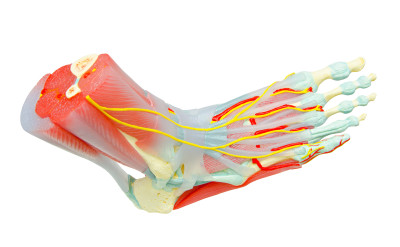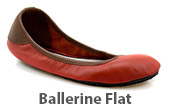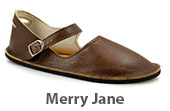Got Cold Feet? Those "Killer" Shoes Could Actually Be Deadly!
Many of the ladies out there (myself among them) have succumbed to the misguided date-night allure of a pair of dainty, peep-toed high-heels. You’re sitting at the table, waiting for your appetizer and wondering if your dining companion has noticed how great your legs look, when suddenly your downward-drifting gaze is stopped short. Those pretty pumps are now tipped by some seriously sad-looking toes, their unhealthy shade of bluish-purple clashing horribly with your forest-green pedicure. Yuck, that can’t be good, you think, stealthily hiding your feet under the table… and wishing you’d just worn your cute new ballet flats instead.
An unconfined foot is a happy foot. Instinctively, we all know just how viscerally good it feels to spread and wiggle our toes, especially if you’ve been compelled to squeeze them into stiff, tight, tapered footwear for any length of time (we know, we know, Softstar needs to start making ice skates!). We kick off our shoes, pull off our socks, and sighhhh with relief. But WHY?
Dr. Ray McClanahan, DPM, podiatric physician, surgeon, and preventative foot health advocate, recently published an article describing the effects of restrictive footwear. They aren’t good. As it turns out, tapered-toed shoes can constrict feet precisely where space is needed most, and the foot health consequences can be severe.

Regular, uninhibited blood circulation is critical to the health of one’s extremities. Tissues rely on healthy blood flow to function and regenerate; systemic circulation delivers oxygen-rich blood to bodily tissues, while pulmonary circulation transports extraneous substances (lymph, dead tissues, and spent blood) back to the internal organs for processing. In the foot, these perpetual, complementary delivery cycles rely on circulatory super-highways located between the metatarsal bones of the toes and forefoot, the same latitude as the “ball” of the foot. Unfortunately, narrow, tapered toe boxes create a pinch point in this very area, essentially squeezing four-lane freeways into warped, one- or two-lane backroads unfit to handle the volume trying to use them. This unnatural restriction causes back-ups, traffic jams, and sometimes fatal accidents. “In extreme cases, prolonged insufficient blood flow to your extremities may cause tissue death and lead to amputation of your affected body part,” McClanahan writes.
No wonder it feels so good to kick off those cleats! Releasing a foot from a compressed environment is like pulling a drowning person out of the water—once free, both instantly strive to replenish their depleted life-forces and restore their depressed functionality. Keep that foot confined for too long, however, and its ability to bounce back can be permanently impaired.
How to Improve Blood Flow in Feet
Dr. McClanahan offers several suggestions for promoting healthy blood flow throughout the foot:
1) Choose Roomy Shoes: When shoe-shopping, find a truly wide toe box! Make sure that the shoe’s shape not only widens out to accommodate the ball of the boot, but remains wide and loose enough that the toes are not squeezed together so that movement is restricted. Try the shoes on, and see if you can stretch and wiggle your toes comfortably before committing to a purchase.
We may be biased, but we recommend our handcrafted Softstars:
2) Spread and Stretch: Even if you’ve already done some damage to your foot structure with restrictive footwear, that doesn’t mean these effects can’t be undone. Toe-spacing products, like Dr. McClanahan’s Correct Toes, can help gradually spread the metatarsal bones into better alignment, reopening the circulation pathways in between the bone in the process. (Hint: You’ll get results faster by combining Steps 1 and 2; that is, wearing your Correct Toes while going through your daily activities in your spacious shoes).
3) Activate and Stimulate: What is the last place oxygen-rich blood reaches in your foot? Your skin. When blood gets to your skin, it needs to flow through the main vessels in your foot to get there. Ergo, if you encourage circulation to your skin, you will stimulate circulation in general. Dr. McClanahan recommends massaging your feet and toes with a natural sports cream containing ingredients like menthol, camphor, or capsicum. The massage will increase blood flow throughout your feet, while the active ingredients in such sports ointments will prolong these effects, especially when followed by a walk, run, or other form of exercise that engages the extremities!
[Check out Dr. McClanahan’s entire article, or watch his Vlog post on the subject above!]
Have you overcome circulation problems in your feet caused by constricting footwear or illness? Tell us how!
Related Posts:

Jana is a marketing strategist, writer, and editor passionate about promoting businesses making a positive impact. She holds a Master’s of Business Administration with a Sustainability emphasis, and she has proudly put her training and experience to use connecting health seekers with brands and services that improve their lives. Her specialities include copywriting, brand development, content strategy, on-page SEO, and social media. She lives in Eugene, Oregon with her husband, toddler, adorable dog, and well-fed cat.





With this kind of support and the manufacture of the this roomy toe bed, you have earned me as a customer for life
Anthony Dennard